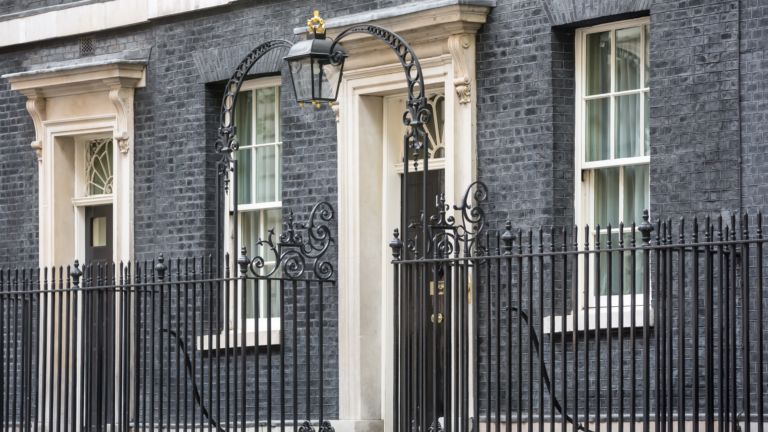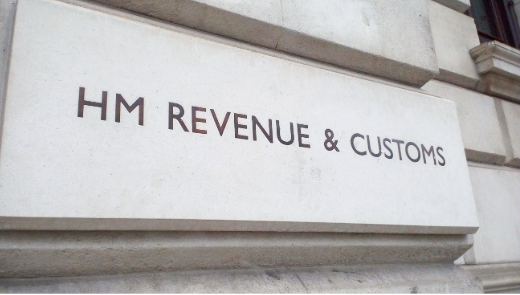How Much Can I Pay Into My Pension?
Many people put off pension planning until later in life. Sometimes this is for budgetary reasons, or it may simply be down to not fully understanding the options available.
The State Pension might be just enough to pay the bills, but it’s not going to fund anyone’s dream retirement. Workplace pensions are a useful top-up, but the contribution requirements are low and many workers, such as freelance contractors and entrepreneurs are not covered by the auto-enrolment rules.
The key is to understand the options, plan as early as possible and make adjustments as needed along the way.
This is where a financial plan comes in. Investment and tax planning will form part of the picture, and pensions are a useful tool for implementing both. The amount you contribute to your pension should take into account how much you need to accumulate, how much you can afford to pay in, and the most tax-efficient use of your allowances.
We have prepared this guide to help you understand your pension funding options. It covers the types of pensions, the ways in which you might contribute, the tax reliefs on offer and the potential issues caused by over-funding.
What are Defined Contribution Pensions?
A defined contribution pension allows you, or your employer, to pay in money, which is then invested. The goal is to build a pot capable of sustaining you throughout your retirement. The value and your pension income are not guaranteed. It is the individual’s responsibility to make sure their pension will provide them with enough to live on.
The features of a defined contribution pension are:
- Personal contributions receive tax relief. For every £80 paid in, a further £20 is credited by HMRC, resulting in a gross contribution of £100.
- Higher and additional rate taxpayers can also claim further tax relief either through their tax return or by contacting HMRC.
- Anyone can contribute up to £3,600 (gross). This costs £2,880 before tax relief is added.
- Those with relevant UK earnings (such as a salary or trading profits) can contribute up to the value of their allowable income. For example, someone with a salary of £40,000 could contribute £32,000 net, which would then be grossed up to £40,000.
- Contributions are also further limited by the Annual Allowance (see below).
- The investment funds within a pension grow free of tax.
- Benefits can currently be taken from age 55, although this is rising to ten years under State Pension age.
- A tax-free lump sum of 25% of the fund can be taken, either when you retire or even earlier if you wish. Some plans offer a higher amount.
- The balance of the fund must be used to provide a pension income. An independent financial adviser can help you make sense of your options at retirement.
Types of Defined Contribution Pension
A range of pension plans is available, from the very simple to the vastly complex.
Stakeholder pensions and personal pensions cover a wide range of charging structures and investment options. It is likely that most investors can find a suitable option within these two categories, from low-cost plans with simplified fund choices, to whole of market platforms offering funds for every possible requirement.
Your employer may offer a stakeholder or personal pension. Some companies provide their employees with an occupational money purchase scheme. These are similar to personal pensions but may have slightly different scheme rules or additional benefits.
Many platforms now blur the lines between personal pension and Self-Invested Personal Pension (SIPP) due to the wide variety of funds available. A full SIPP may be used if additional investment options are required, such as private equity or commercial property.
A Small Self-Administered Scheme (SSAS) is an occupational pension connected with a sponsoring employer. This shares the investment flexibility of a SIPP, but pools assets among multiple members. SSAS membership is usually reserved for directors or owners of the company.
A financial adviser will be able to help you select the best pension option for you.
What are Defined Benefit Pensions?
A defined benefit pension provides an income at retirement based on the employee’s salary and years of service.
Scheme members pay a percentage of their salary as a contribution. But the funds are invested centrally rather than earmarked for specific members. The employer must pay the additional costs of providing the members with a pension.
While many companies have closed their defined benefit schemes, existing members still have pensions built up within the schemes. While they won’t accumulate any more benefits, the pension they have accrued is usually increased with inflation and will be guaranteed for life at retirement.
Most defined benefit pensions include a spouse’s pension and may even guarantee to pay the first five or ten years of benefits should the member die early on in their retirement.
Financial advice is mandatory for anyone with benefits of £30,000 or more, who wishes to transfer out of their defined benefit scheme.
Contribution Methods
Pension contributions can be made in the following ways:
- Personal contributions – you deposit funds with your pension provider, either by bank transfer or direct debit. The pension provider claims basic rate tax relief, while higher and additional tax relief must be claimed through HMRC.
- Salary sacrifice – your employer deducts your contributions through payroll and pays them directly to the pension provider. This reduces your salary, which is good news for your tax and National Insurance contributions.
- Net pay method – while your employer deducts the contributions from your salary, they are still regarded as personal contributions. Tax is automatically deducted via PAYE.
- Relief at source – while contributions are deducted from salary, tax relief is credited by HMRC in the same way as a personal contribution.
Your employer can also make contributions for you, subject to the following requirements:
- The total contributions made to your pension should not exceed the Annual Allowance (see below) or you may face tax penalties.
- Employer contributions must be wholly and exclusively for the purposes of trade to receive corporation tax relief. This is mainly a concern for company directors funding their own pensions. You should check with your accountant before making employer contributions to your own pension from your company.
What is the pension annual allowance?
The Annual Allowance is one of the most complex aspects of pension planning, particularly for higher earners. These are the main points:
- The Annual Allowance is the value of personal and employer contributions you can receive into your pension without tax penalty. The annual pension allowance is currently set at 100% of your salary or £60,000 (whichever is lower). This is called the pension contribution cap.
- The tax penalty is based on your personal rate of tax and may be up to 45% (46% in Scotland).
- For defined benefit schemes, the Annual Allowance is measured in terms of the increase to your annual benefits after inflation is taken into account.
- The Annual Allowance is currently £40,000 per year (this is increasing to £60,000 per year from the 6 April 2023)
- If you are a member of a pension scheme but have not fully used your Annual Allowance, you can make a contribution for the current tax year as well as the three previous tax years.
- As contributions are further limited by relevant UK earnings, you either need to have the level of salary required to support the contributions, or have the contributions made by your employer.
- For anyone earning over £200,000, a calculation must be carried out to check if adjusted income (including employer pension contributions) exceeds £240,000. These thresholds have increased from £110,000 and £150,000 respectively following the 2020 Budget. The Annual Allowance is reduced by £1 for every £2 of income over £240,000. Anyone earning over £312,000 is subject to the maximum taper level and has an Annual Allowance of £4,000.
- If you have taken a taxable income from your pension, you will be subject to the Money Purchase Annual Allowance. This reduces the Annual Allowance to £4,000 (increasing to £10,000 for the 23/23 tax year) and means that no further contributions can be made for earlier tax years. Solely drawing tax-free cash does not trigger the Money Purchase Annual Allowance.
It is always worth seeking financial advice if you are at risk of breaching the Annual Allowance. Call us on 020 7467 2700 and we’re happy to give you a quick run through of your options.
What happens if you exceed the annual allowance?
Exceeding the annual allowance in a particular tax year means you won’t get tax relief on any contributions you paid that exceed the limit in that tax year, and you will be faced with an annual allowance charge.
If you earn over £100,000, you will start to lose your tax-free personal allowance, resulting in an effective tax rate of 60% on earnings of between £100,000 and £125,000. Pension contributions can be used to take your earnings below the threshold, keeping your personal allowance intact.
If you earn over £200,000 it is strongly recommended that you seek financial advice as to the best way to fund your retirement without breaching the Annual Allowance.
What is my lifetime allowance?
The Lifetime Allowance is the value of pension benefits that can be built up over a lifetime without tax penalty.
This works as follows:
- The Lifetime Allowance is currently £1,073,100 (2023/2024).
- Your pension is measured against the Lifetime Allowance when any of the following events occur:
- You take benefits from your pension. A proportionate amount is tested if you don’t ‘crystallise’ all of your funds.
- If you reach age 75 without having taken benefits.
- If you reach age 75 with funds in a drawdown plan, although this is only intended to measure investment growth rather than the full fund value.
- If you die before age 75 and without having taken benefits.
- For defined contribution pensions, the amount tested against the Lifetime Allowance is simply the fund value.
- For defined benefit pensions, the amount tested is the annual benefit x 20, plus any additional tax-free cash.
- The excess over the Lifetime Allowance is taxed at 55% if taken as a lump sum, or 25% if designated to provide income (although will also be subject to income tax).
Protection against the Lifetime Allowance may be available if you have not contributed to a pension since 5th April 2016, or if you held pension funds of over £1 million as of that date.
Please note that recently the government announced that it will abolish the lifetime allowance. As a result, from 6 April 2023 the lifetime allowance (LTA) charge was removed. The lifetime allowance will be fully abolished from the 2024 to 2025 tax year.
Top 10 Things to Look Out For
Everyone’s situation is different, and having a comprehensive financial plan is the best way to ensure that you make the best use of the reliefs available. A retirement plan does not need to solely consist of pensions, nor do pensions need only be used to provide a retirement income.
These are the Top 10 things you should look out for when paying into your pension:
- If you are a higher or additional rate taxpayer, don’t forget to claim the extra tax relief on your pension contributions.
- If you run your own company, there are multiple ways in which your business can support your pension and vice versa. Your financial planner can work with your accountant to come up with the best strategy.
- Remember that exceeding the Annual Allowance results in double taxation (when you make the contribution and when you take benefits), so should be avoided if possible.
- The easiest way to breach the Lifetime Allowance is to build up benefits in a defined benefit pension scheme while continuing to make personal pension contributions. It is important to keep checking the capital value of your plans.
- There are other investment options, which may be more suitable if you are at risk of breaching your pension allowances. Utilising your ISA allowance would be the first step, although your independent financial adviser may also be able to recommend other tax planning strategies.
- If you are thinking of taking benefits from your pension, over and above your tax-free lump sum, remember this will limit the amount you can pay into a pension for the rest of your life. Always seek financial advice as there may be other options.
- You do not need to accept your pension provider’s default option when it comes to taking retirement benefits. Income sources can be combined for maximum tax efficiency and fund sustainability.
- Pension benefits are not considered within your estate for Inheritance Tax purposes and can be passed on free of tax before age 75 (although taxed at the beneficiary’s own rate thereafter). Your solicitor can help you set up Trusts to maximise the benefits. A good financial plan will balance estate planning benefits with immediate tax efficiency.
This article is based on our understanding of tax law as of 13 April 2020 (2020/21 tax year).
We are a firm of Independent Financial Advisers based in London. Please don’t hesitate to contact one of our Chartered Financial Planners by emailing us at hello@firstwealth.co.uk if you would like to find out more about your retirement planning options.
Regulatory and Performance Warning
This document is Marketing Material for a retail audience and does not constitute advice or recommendations. Past performance is not a guide to future performance and may not be repeated. The value of investments and the income from them may go down as well as up and investors may not get back the amount originally invested
This document is marketing material for a retail audience and does not constitute advice or recommendations. Past performance is not a guide to future performance and may not be repeated. The value of investments and the income from them may go down as well as up and investors may not get back the amount originally invested.
Let's Talk
Book a FREE 30-minute Teams call and we’ll answer your questions. No strings attached.
Check Availability



